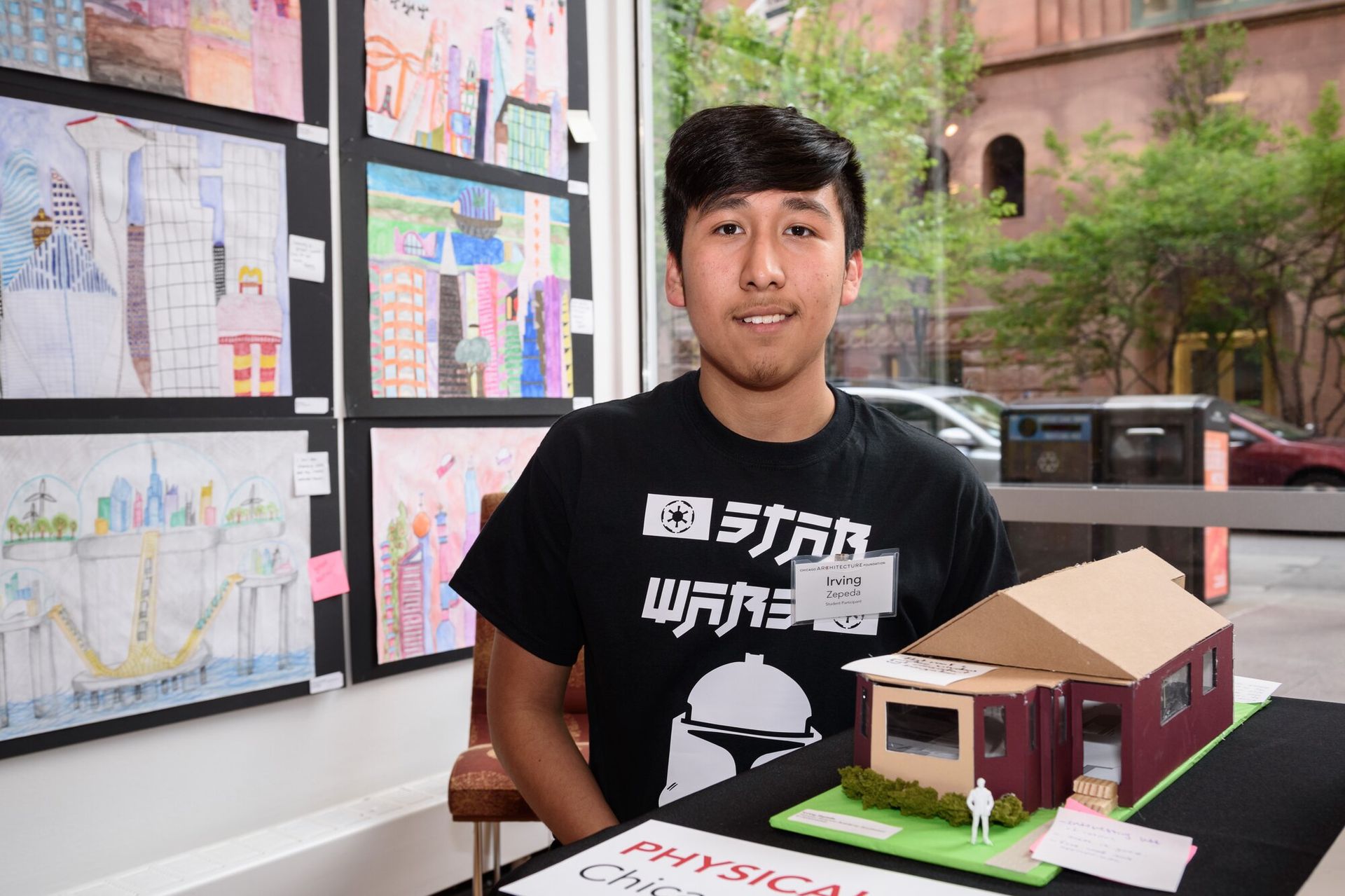Newhouse Architecture and Design Competition
Applications for the 2025 competition are now closed. Contact caclearning@architecture.org with questions or sign up for our newsletters to get notified for future events!
The 2025 Newhouse Architecture and Design Competition will be a free weeklong camp designed for students in the Chicagoland area. This competition will take on real-world architecture and design challenges and participants will have a chance to showcase their projects to a jury. Winning projects will receive cash prizes!
WHO SHOULD APPLY?
This camp is ideal for high school students who are excited about design and are motivated to bring their ideas to life through architecture techniques. Architecture skills are not a pre-requisite, but those who have them are encouraged to apply. Participants must be local to Chicagoland and available in-person for the entirety of the camp.
WHAT TO EXPECT
The Newhouse Architecture and Design Competition will provide a supportive, intensive learning environment alongside design-loving peers and graduate-level design educators. Participants will experience skill building workshops and field trips with architecture experts.
Go from challenge to completed project in five days, including floor plan design, an architectural model and written narrative. The camp concludes with a juried competition and showcase.
- Dates: August 4-9
- Times: 10 a.m. - 4 p.m.
- Grades: 9-12
- Location: The Chicago Architecture Center 111 E. Wacker Drive.
Named after the late Illinois Senator, Richard Newhouse, this annual competition allows students to practice design thinking and 21st-century skills like creativity, critical thinking, collaboration and communication. It inspires teens to understand why design matters by researching, representing and redesigning the built environment to solve challenges that are communal and place-based.
Related:
Meet our 2024 Newhouse Architecture + Design Jurors from Human Scale
Human Scale is a 501(c)(3) nonprofit organization founded in 2018 by a group of architecture students with the goal of using their skills to make a positive impact in their communities.
"Our mission is to design and build functional, beautiful and meaningful public spaces in historically disinvested neighborhoods across Chicago. As a result, our work seeks to improve mental and physical wellness, promote civic responsibility, highlight heritage and culture and foster strong inter-generational relationships within the communities we work in."
Jurors
Walmer Saavedra is responsible for overseeing the day-to-day activities and strategic planning of the organization.
In 2017, he co-founded the National Organization of Minority Architects student chapter at the University of Illinois at Chicago. Serving as President, he successfully grew the chapter’s membership with the goal of increasing minority participation in the field of architecture.
He believes that architecture inevitably impacts people’s lives through the built environment. As a result, architects have a responsibility to implement conscientious design initiatives that aim to make people’s lives better. He also believes in empowering youth to address and solve social issues.
Walmer graduated from the University of Illinois at Chicago in 2019 with a Bachelor of Arts in Architectural Studies degree. He currently works for a real estate development and construction management firm in Chicago.
Jorge Luis Mayorga holds a Masters in Architecture and a Masters in Landscape Architecture + Urbanism from IIT. He has been recognized as a 2024 University Olmsted Scholar.
In 2016, he participated in the AA Visiting School in Haiti, where he designed a bamboo modular house as an ecological solution for the aftermath of the 2010 earthquake. In 2021, Jorge contributed to The Driverless City Project, improving urban ecology, safety, and efficiency while revitalizing communities. In 2022, he focused on the Englewood Trail project, aiming to transform the abandoned railroad into an Agro-cultural trail.
Jorge aspires to serve as a role model for positive change and aims to become a licensed landscape architect to strengthen resilience within marginalized communities and cities worldwide.
Hsu Myat Aung is currently an architectural designer at Perkins&Will, working on Cultural and Civic project. She co-founded Human Scale, a nonprofit organization that aims to help underserved communities in Chicago through design and construction. Since grade school, she has been passionate about helping local communities.
She has a Masters of Architecture from IIT, where she received AIA Diversity Scholarship and CWA Roula Alakiotou Scholarship awards. She had won best undergraduate project award at UIC. During AA Visiting School Workshop in Haiti, her team design was chosen and built as a prototype housing made of bamboo.
Hsu has been passionate about contributing her experience to students and young designers through different Architecture organizations such as AND+A, NOMA and IIT. She is currently part of CWA 50th anniversary exhibition committee team.
Omar is an educator and maker based in Chicago. He serves as board chair for Human Scale where he helps to develop strategies that meet the organization's long-term goals. He is involved in the process and execution of the organization’s projects.
Omar holds an AAS in Architectural Drafting from Harold Washington College and is a BArch candidate at the Illinois Institute of Technology. In 2022, he joined the re-ignited Arquitectos student chapter at IIT. As the current president, he has increased awareness and engagement with Latinx designers and makers.
Omar believes change starts at the block level. Sharing the processes and facilitating conversations around what could make a healthy block and physically building a space creates a sense of ownership and pride. As designers we should design with, not for.
Alexander Casimiro is an Assistant Project Manager at Human Scale. He is involved in the design, construction and development of projects. As an alumnus of ACE Mentor Chicago, he used the experience gained in the 2016, 2018, and 2020 Design Build Workshops to create his own way of giving back to the community.
Alex graduated from Triton College in 2021 with his Associate of Arts and Sciences in Architecture degree, he also received certifications in Architectural Technology, Architectural Design and BIM in 2020.
He currently serves as an Instructor with After School Matters running his own Design, Build, & Skate program and the Makelab program, both programs expose Chicago teens to various aspects of the AEC Industry.
Aylen Pacheco is an architectural designer with a passion for equity in community development.
During university, her passion for inclusive design led her to co-found Human Scale, a 501(c)(3) design-build nonprofit with the goal of using architecture to make a positive impact in underserved communities around Chicago.
Aylen’s interest in community-led projects also led her to join Beehyyve as an Associate Partner where she develops design and construction documents for high rise, adaptive reuse, commercial, and affordable housing projects. As a young woman in architecture, Aylen aims to bridge the gap between innovative design and socially just urban development.














